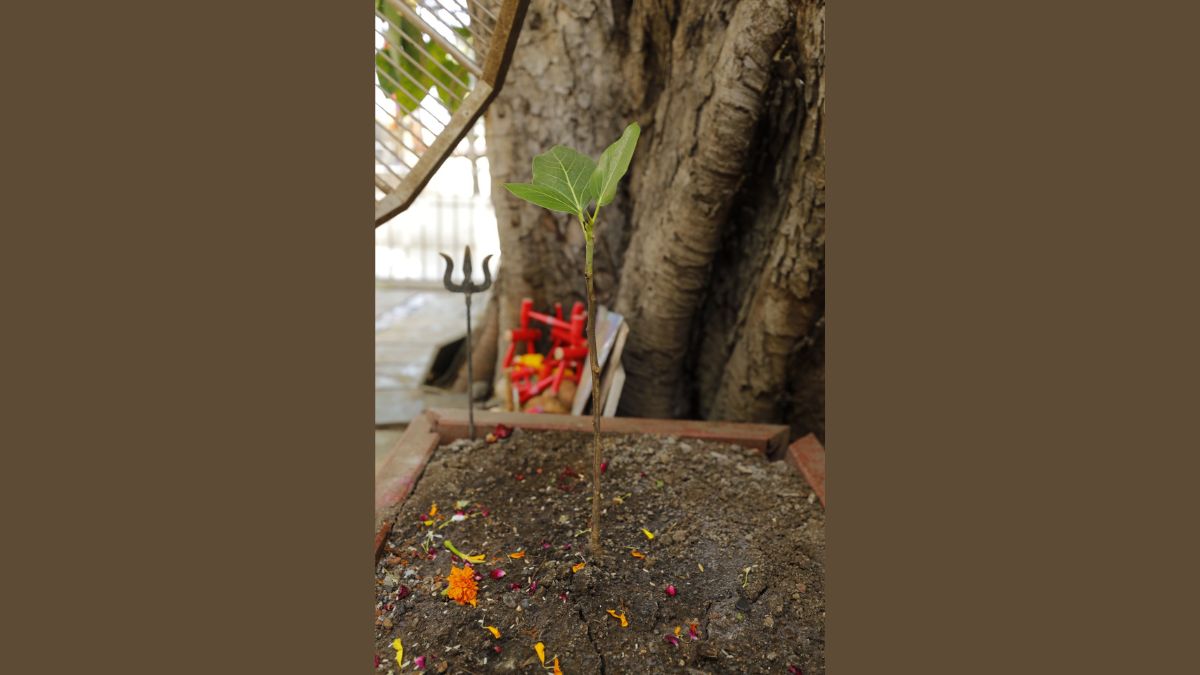Surat : This Sacred Three-Leaf Banyan Tree is a living testimony to Mythology on Tapi river bank
As the story goes, during the Dwapar Yuga, a small three-leafed tree emerged near the banks of the Suryaputri Tapi river, capturing the awe and reverence of the people.

Advertisement
Surat : River Tapi, a serene and ancient river that flows through the heart of India, holds within its banks a profound tale of faith and spirituality that dates back five millennia. Nestled along its shores stands a remarkable three-leaf Banyan tree, which has become a center of religious significance in Hindu mythology.
As the story goes, during the Dwapar Yuga, a small three-leafed tree emerged near the banks of the Suryaputri Tapi river, capturing the awe and reverence of the people. Despite its humble stature, merely one and a half feet tall, it came to symbolize the greatness of the mighty Tapi river itself. From the very beginning, religious beliefs and faith were intertwined with this enigmatic tree.

One of the most remarkable tales associated with the tree traces back to the time of the great Mahabharata battle when the valiant warrior Karna met his tragic fate. After Karna’s death, his last rites were performed at Ashwini Kumar, and it was Lord Shri Krishna’s will that a three-leaved tree grow on this sacred land as a symbol of Karna’s memory.
The three-leafed Banyan tree has its own mystical way of preserving its symbolic nature. Whenever a fourth leaf appears, one leaf falls away, ensuring that the number of leaves remains constant – three. This perpetual cycle reminds everyone of the divinely ordained nature of this extraordinary tree.
The significance of the tree’s location holds deeper meaning, as both Ashwini and Kumar were Karna’s brothers, and the river Tapi was considered to be Karna’s sister. Legend has it that Ashwini and Kumar sought solace and enlightenment through rigorous penance in this very area, which subsequently came to be known as Ashwinikumar.
In ancient times, the last rites of the noble Suryaputra Karna were performed at the banks of the Tapi in the sacred precincts of Ashwinikumar. A concern arose among the Pandavas about how future generations would remember this momentous event. In response, Lord Shri Krishna prophetically declared that a three-leafed tree would flourish on this hallowed ground, with each leaf symbolizing Brahma, Vishnu, and Mahesh (Shiva). These profound revelations were enshrined in the sacred texts of Tapi Purana.
Even in the present day, the awe-inspiring tree of three leaves stands tall, exuding an aura of blessedness. Pilgrims and devotees flock to this sacred site to seek solace and to connect with the divine through this living relic of ancient mythology.
The three-leafed Banyan tree on the banks of river Tapi has become a unifying symbol for people from all walks of life. Its existence transcends the boundaries of time and serves as a poignant reminder of the timeless tales passed down through generations.
In a world filled with modern wonders, the three-leafed Banyan tree remains an essential touchstone to connect with the ancient roots of spirituality and mythology. Its presence reaffirms the enduring power of faith and belief, standing tall as a testament to the rich cultural heritage of the land.
Advertisement

